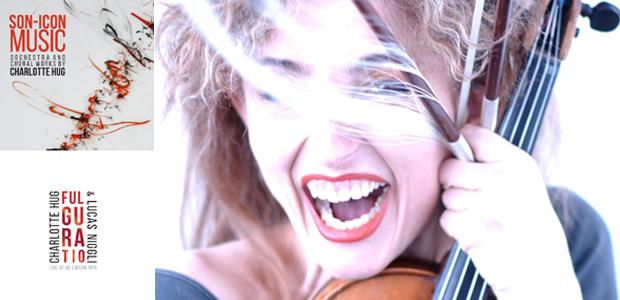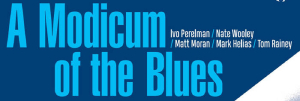Charlotte Hug - „Going to the origins of the sound”

First class improviser. Visual artist, violist, composer – Charlotte Hug performed during this year’s Ad Libitum Festival with Krakow Improvisers Orchestra. In the meantime between rehearsals, she told me about mixing visual art with music, her performances and sources of her creativity.
When I was preparing this interview in many sources in Internet, I’ve found mistaken information, that you are playing violin, not viola. What is your typical reaction for this kind of people’s mistake?
Violin and Viola are part of the same instrument’s family. If somebody is interested, I like to explain the many substantial differences between violin and viola in terms of tuning, instrument technique and sonority.
And why have you chosen viola for your main instrument?
I play violin since I was four. My grandfather who was violinist introduced me to this instrument. Then I discovered viola. The range of my voice corresponds very well to the range of viola. My passion is also to mix those two sounds. I love when the hybrid sound appears.
Viola is often used in orchestras and classical chamber music. Have you got some episodes in that field?
Yes, I studied classical music and played in the Swiss and in the European Youth Symphony Orchestra for many years. The orchestra’s repertoire from Mozart to Mahler Symphonies is very familiar to me. The contemporary music came later. I started with ensembles and solo performances.
What does your working place look like?
I often play outside of my studio in very different places and times of the day or even night. I travel very often and work in specific time, so it is rather hard to play regularny in my studio in Zürich. On the other hand practicing every day is crucial for me. My studio in Zürich is more or less soundproof little room on the top floor of my house. Here is also my studio for visual art. I graduated in Visual Art and Music, that’s why the space in between inspires me a lot. My studio has two rooms, one for music and one for visual art, they are door to door. During acomposing or just for stimulation to go beyond my borders in improvisation, I create visualizations of imagined sounds.
I would like to ask you about your Project Son Icons. Do you need any specific place to perform it?
Son-Icons are often very large stripes of half transparent film. I install them everywhere, in public space like the golden Acre in Cape Town at the infecting the city festival. Last week I player with the Moscow Contemporary Music Ensemble and Lucas Niggli. We played my new piece „Hard-flowing-transparent” with Son-Icons. Once we player it in in the Alexandrinskij Theatre in Sankt Petersburg and the next day in the Multi Media Museum in Moscow. These spaces were very different, a black box in Sankt Petersburg and a very spacious complex in Moscow. I always adept space to perform Son Icons.
What was your main goal while creating Son Icons?
By drawing Son-icons I wanted to touch the music, to dance with both hands and several pencils on the paper, to see the structures and energies of the music. Each medium tells other stories and gives other information about the same thing. With this transdisciplinary approach I get diverse information and perspectives.
During festival Ad Libitum you’ll be playing with Krakow Improvisers Orchestra. Tell me, what have you prepared for this performance and what were your expectations?
In my compositions as well as in the concepts for improvising orchestras I want to create a diverse setting, where the orchestra and each individual musician can go beyond what they did before. With the Krakow Improvisers Orchestra we worked with Son-Icons in two different approaches . My biggest wish is to go to the origins of sounds. The primary resonating space is our mouth. It is the channel of the emotions, thoughts, pleasure, culture and primal impulses. With Krakow Improvisers Orchestra we studied the visualizations of current sound, strokes of the tongue and the swirl of the air in all conceivable formations inside the mouth. In the same time we expermineted with the tonal possibilities on the instruments.
Creating sounds is just a one thing — the act of a fading a sound is the other aspect on which I tried to focus with Son-Icons. In the context, from beginning and ending everything is possible in the middle section. Creating a concept for improvising orchestra means to me offering a situation where each individual and the whole orchestra as well is invited to go beyond the borders, during creation.
What would you like to say through your music and works?
I want to communicate with my music and interact with people. I always offer something which has multiple perspectives, entrances issues and exits. I want to invite people to get in touch.
- Aby wysyłać odpowiedzi, należy się zalogować.







